KIAF 2021: Online Viewing Room
Past viewing_room
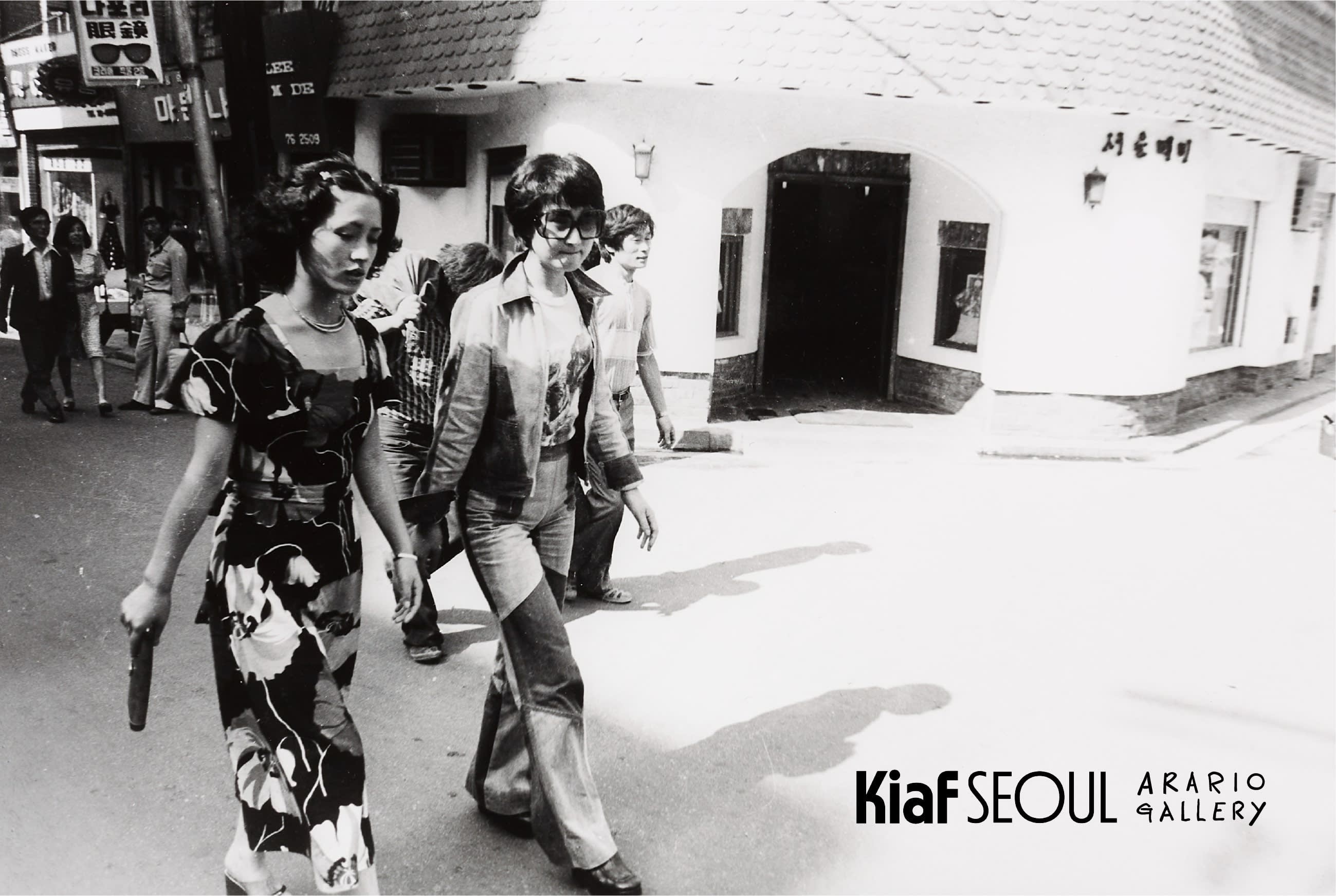

Since 1971, KIM Soungui has been pioneering new art that combines performance, video, installation and aesthetics by interacting with experimental artists in France. In 2019, she held a large scale retrospective exhibition ‘Lazy Clouds’ at the National Museum of Modern and Contemporary Art, Seoul and has an upcoming exhibition at ZKM(Zentrum für Kunst und Medien). Her works are in collections of major world class museums such as the Centre Pompidou(France), MMCA(Korea), Maison European de la Photography(France), FRAC Franche-Comté(France) and Seoul Museum.
In 1982 KIM went backpacking to various countries of the world, exploring the culture and arts of the East and the West. While in New York, she associated with video artists such as Nam June Paik, Ko Nakajima, Ira Schneider and Frank Gillette. With her deepening interest in video and multimedia, she organized Video & Multimedia: KIM Soun-Gui and her invitees (1986), with the participation of Nam June Paik, John Cage and others, and presented multimedia works combining objet and video, such as Tatata and Vide&0. From the late 1980s she dealt with issues related to the spread of global capitalism and structural changes in society due to the Internet, through her works such as O-time and Voie-Voix Lactée(Milky way). She produced Stock Exchange, which took a critical viewpoint of civilization in which the value of capital takes priority over all other values, and highlighted the U.S. invasion of Iraq, and carried out interviews with world-renowned aestheticians including Jacques Derrida and Jean-Luc Nancy, to discuss the values and roles of art in the neoliberal era.
KIM Soungui has continuously worked on Korean traditional culture. In particular, she has explored archery, targets and colors used in targets and realized that that combination of physical movement and mental judgement through the practice of Korean archery, which she has been learning since high school, was consistent with the strokes of archery and calligraphy. In addition, in <Bonjour Nam June Paik> she participated with Nam June Paik in a joint performance of writing poetry on a colored silk canvas. These performances became the starting point of two-dimensional paintings such as <Fly on the Cloud>(1984) which analyzed the five colors of the target through Eastern philosophy and her interest in traditional colors are further shown in her saekdong works.
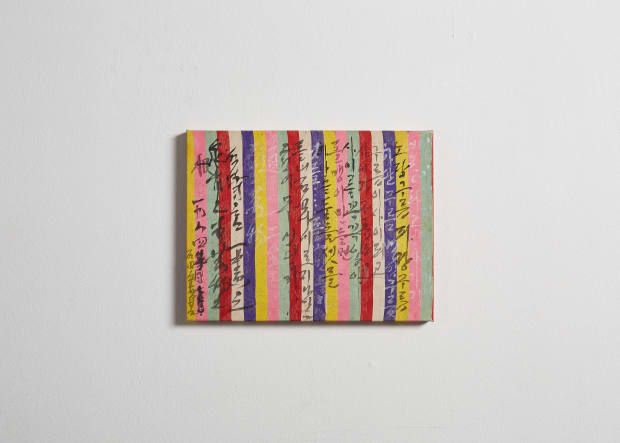




PARK Youngsook was born in 1941. She originally studied History at the Sookmyung Women's University where she also completed her graduate studies in Photography and Design. She began to exhibit photography works in 1966 and her then extraordinary female awareness was visualized in a certain exhibition, in 1975.
It was her solo exhibition organized by ‘Women’s Association’ to commemorate ‘International Women’s Year’, established by the United Nations. Park exhibited various photographs subjectifying social issues including women’s reality today under the theme of <equality, peace and love>. From 1981 she continues to be bold and active with her stature as a feminist at the age of 40. From 1992 she is marked as feminism activist to become a member of ’Women Art Research Association’, a feminist group affiliated with ‘Minjung Art’.
With her works she has participated in numerous solo and group shows such as Seoul Museum of Art, National Museum of Modern and Contemporary Art, Gyeonggi Museum of Modern Art, Gwangju Museum of Art, The Museum of Photography, Seoul, Gwangju Biennale (2002) ; as her work is part of many significant collections as of the National Museum of Modern and Contemporary Art, Seoul Museum of Art, The Museum of Photography, Seoul, Gyeonggi Museum of Modern Art, Gwangju Museum of Art, Sunggok Art Museum, National Human Rights Commission of Korea, Ewha Women’s University, Sookmyung Women’s University among others. She founded in 2006, Trunk Gallery. It focuses primarily on photography gallery in Korea.


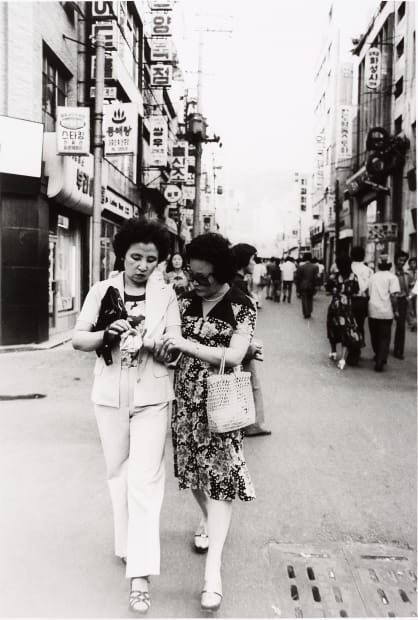

KIM Kulim is the first avant-garde artist in Korea. He formed an experimental group called <The Fourth Group> in 1969, and presented a series of performances. Also, he produced Korea’s first avant-garde film, breaking from the existing film grammar, <The Meaning of 1/24 Second>(1969); the first work of mail art, <The Relic of Mass Media> dealing with the issue of the media in our civilization; the first light art piece; and Korea's first work of land art, < From Phenomenon to Traces> (1970). Crossing the boundaries between theater performance, film, dance and directing and leading the contemporary Korean art scene at the forefront, he broke away from his established stance unlike other artists from his generation in the mid '80s. He went over to the US in search of zeitgeist and sensitivity, and has been ceaselessly attempting new experiments since.
Believing that changing times entail changes in thoughts, which in turn leads to new works, KIM has been unfurling his artistic critique of our contemporary civilization with his aesthetic reflections through his works since the ‘90s based on the philosophy of Yin and Yang as well as his desire to seek harmony among different worlds, propelled by his deconstructive reasoning and nomadic tendency of delving into a chain of self-reflection and denial. He has focused on his own unique world, refusing to compromise with the mainstream and reclaiming new territories with the spirit of the avant-garde. The denial of conventions, and constant deconstruction of his own work – this is why we see KIM Kulim as a peerless artist.
In the 1970s, he focused on things that change over time. His work <Wiping Cloth> produced in 1974 is a work that contains a video of Repeatedly wiping the surface of an iron plate with a cloth, and with this work he was invited to the 2nd International Impact Art Video Exhibition held in Lausanne, Switzerland that year. Without a single word and only with gestures, KIM Kulim tries to show the surface of the iron plate that is changed by continuous acts of wiping the table. This work implies the artist’s intention to leave the passing time as a physical trace.
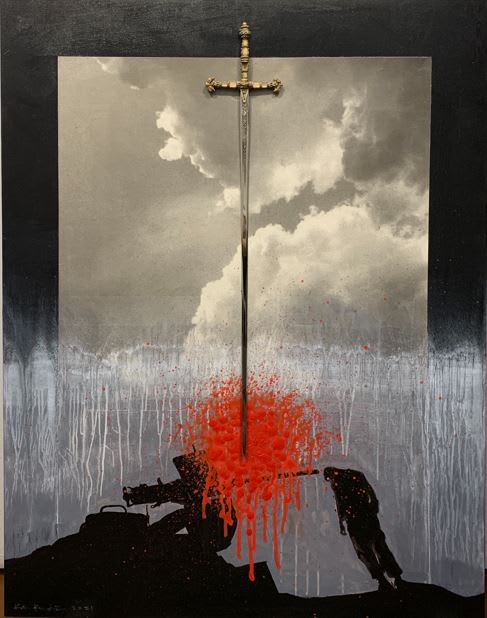
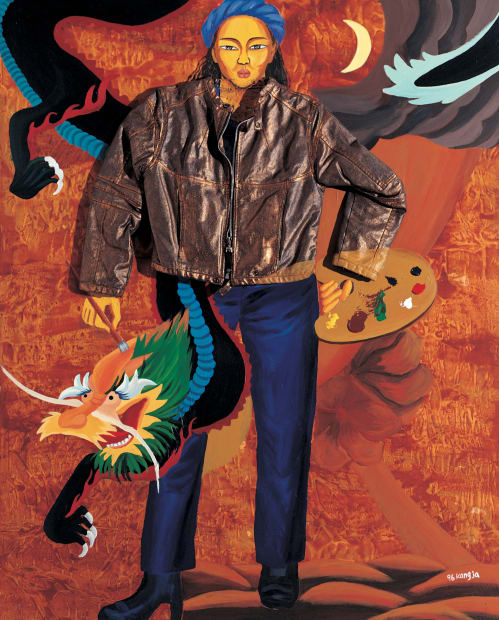
JUNG Kangj(1942-2017) is one of the representative female artists who addressed a turbulent historical era in Korea. She emerged in Korean art circles through the Korean Young Artists Association Exhibition in 1967. In the 1960s and the 70s, when the Korean military government and ideologies were in conflict, JUNG tried to make voices in society through various formative experiments as a member of 'New Exhibition Coterie' and 'The Fourth Group'. Introducing the real politics into the context of art by using an artist's body and performance was a challenge to the traditional ideas and a resistance on the social system. However, in 1970, the government started to impose more severe sanctions against all activities using the human body.
After her solo exhibition in 1970, JUNG moved to Singapore with her family and spent time away from the Korean art scene for over 10 years. The artist's socially critical mind and subjective spirit in the 1960s were connected to formative experiments in the paintings she was devoted to after her return to Korea in 1981. JUNG's strong willpower became an impetus to allow her to overcome alienation, and a driving force to make her stand in front of the canvas despite the harsh struggle with cancer. JUNG's work over the last 15 years does a poignant job of displaying her interest in something concrete and realistic, something that had expanded into interest in human beings through abstract, transcendental forms. In short, she wanted to liberate herself through "imaginations that I stretch in my own way in an unlimited, free space that is bound to nothing.“
<Self-Portrait> (1996) depicts the artist herself, staring the front directly, wearing a leather jacket and holding a palette on one hand. Behind the artist, there are decorations of a dragon and moon. The artist expresses herself with exotic appearance and by wearing a leather jacket and high heels, reveals her femininity and characteristics as well as emphasizing her identity as a female artist.
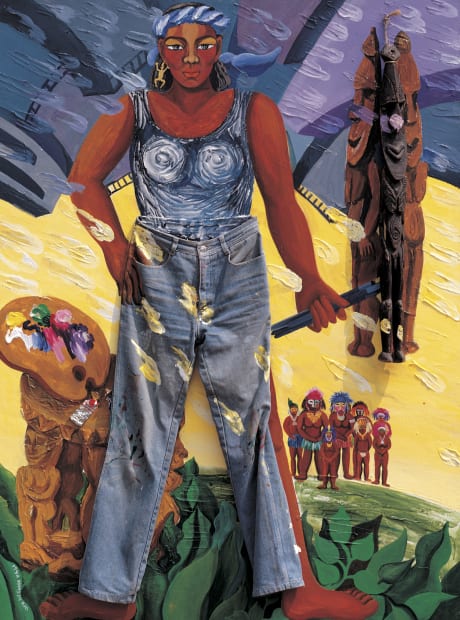

UM Tai-Jung, since his fascination with the materiality of steel during his undergraduate studies at Seoul National University in the early 1960s, Um has devoted himself to metal sculpture and investigated materials and resources throughout his career that continues to the present. In 1967, he caught the art world's attention as his emblematic steel sculpture A Scream won the Prime Minister's Prize in the 16th National Art Exhibition, and in the seventies he presented copper sculptures that revealed a remarkable contrast between the material's internal and external sides in terms of color and texture.
Arario Gallery presented the artist’s solo exhibition A Stranger Holding Two Wings, in 2019, featuring various new aluminum sculptures and two-dimensional pieces created over the past fifty years of Um’s career as an abstract sculptor, along with recent large-scale aluminum works. Through this exhibition he was noticed by Clare Lilley, a world renowned curator in the field of contemporary sculpture and the artist was selected as the only Korean artist to participate in Freize Sculpture 2019, and presented a large-scale outdoor sculptural work. He is the third Korean artist to be selected following Lee Ufan and Kim Sooja, and since then he is internationally recognized for its artistic value.
UM Tai-Jung called himself a material enthusiast, but perhaps a more fitting way to describe him would be a meditator who creates and contemplates the relationships between materials and the sculptor himself, and among people who encounter the sculptures he makes, and the very spaces they occupy through his sculptures—a kind of a new living presence in its own. Certain materials exist within the fabric of time and space. An artwork, however, can reside in a certain space while transcending time. Some artworks could even transcend not only time, but concrete spaces – these would be works that continuously generate new meaning and space within the physical relationship with the beholder. Um’s works are positioned between time and eternity, space and that which is not spatial in that they allow for the existence of invisible space while itself occupying space, and also in that this invisible space is formed through its relationship with the viewer. It is something that creates space within space. Like Um himself, his works begin with but transcend the material, and seek to fill by emptying out, reaching beyond the bodily traces even as they are born of the toils of handcraft.
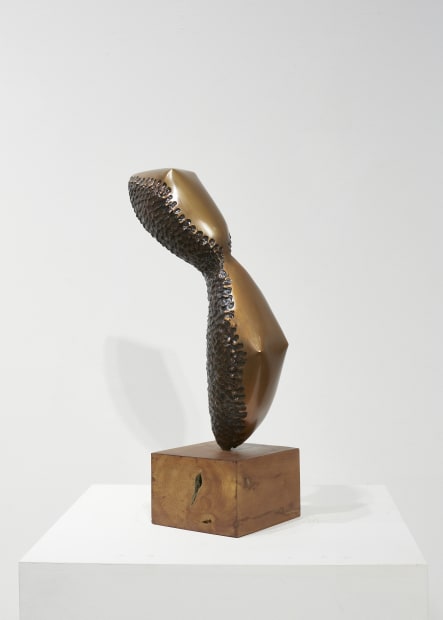

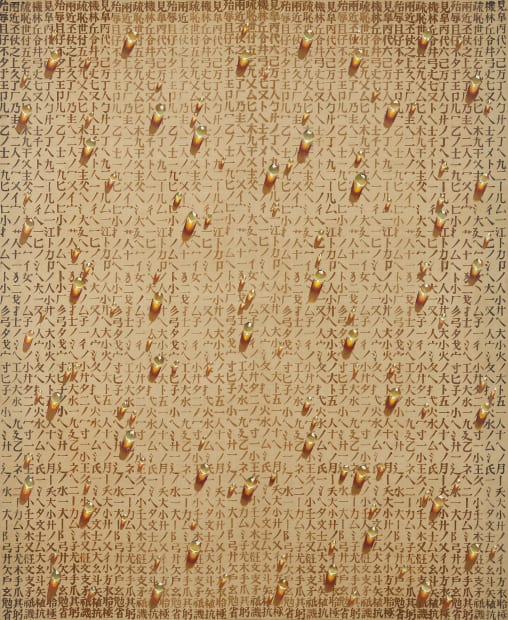

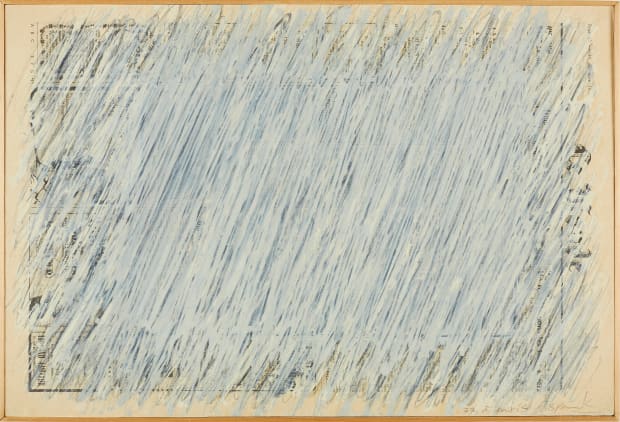
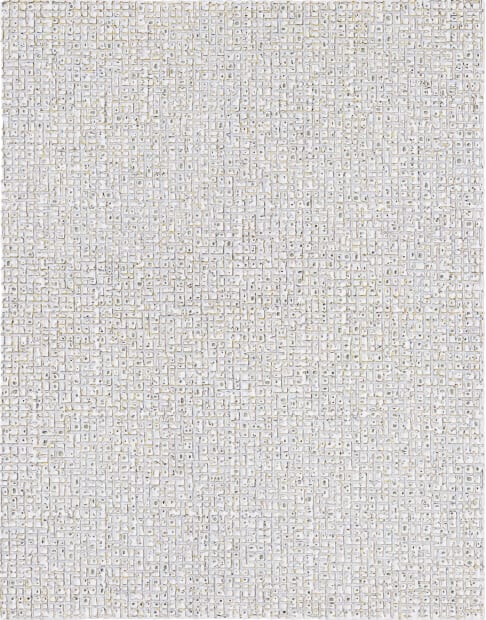
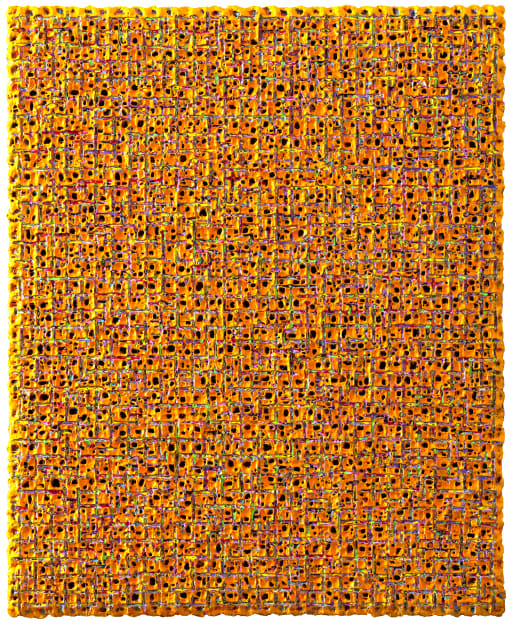

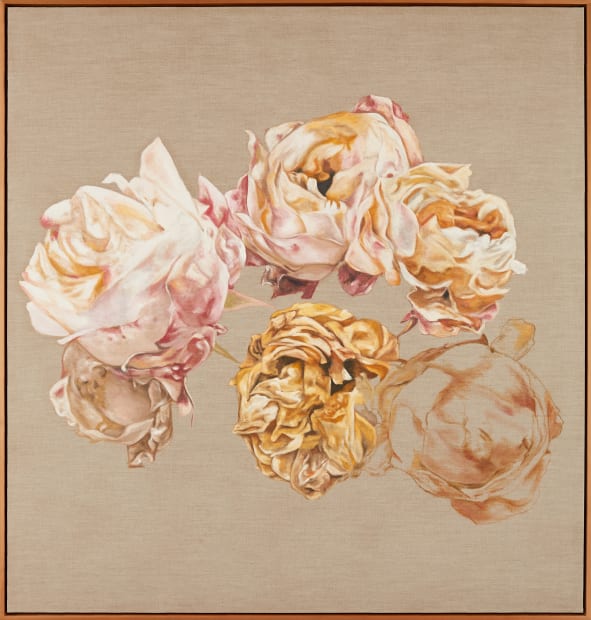
Subodh GUPTA is not only India’s most well-known artist, but has also directed attention toward some of the most significant cultural concerns in South Asia. In a highly reductive language, he combines formalism with the wry, incisive understanding of symbols and forms used in contemporary India. Migration from village to city, the charged and unpredictable encounter with globalism, and cultural hybridity are crucial concepts in his work. As a sculptor, GUPTA’s use of material is always strategic and deeply expressive of conceptual context. Past exhibitions combined leading and well recognized strains in Subodh GUPTA’s work. It also introduced new elements and materials, indicating the artist’s dynamic engagement with human existence. GUPTA’s preoccupations with everyday life take on an interesting turn: monolithic buckets and tiffin boxes that rise above the ground draw attention to third world economies and everyday acts of survival. His iconic sculpture on the submerged Indian taxi titled Everything is Inside (2004), and an entire city constructed of shining stainless steel tiffin boxes is counterbalanced by his recent forays into marble. One of GUPTA’s seminal works, The Way Home (2001), merges aspects of Indian domestic and political life. GUPTA has exhibited sets of paintings which bring together the artists’ sweeping embrace of the still life, the 17th century Dutch painting, photo realism, and objects of the everyday.
Subodh GUPTA was born in 1964, Khagual, Bihar, the seat of Buddhist learning. He studied at the College of Art, Patna (1983 – 1988) before moving to New Delhi where he currently lives and works. Trained as a painter, he went on to experiment with a variety of media. His work has stood out in major international biennials and has been the subject of numerous solo exhibitions across Asia, Europe and America.
Subodh GUPTA has shown his works in several international art institutions. His recent solo exhibitions include ADDA / RENDEZ-VOUS (Monnaie de Paris, Paris, 2018), In This Vessel Lies the Philosopher’s Stone (Galleria Continua, San Gimignano, Italy, 2017); From Far Away Uncle Moon Calls (Mead Gallery, Coventry, UK, 2017); Terminal (Freer Gallery of Art, Washington, USA, 2017); Invisible Reality (Hauser & Wirth, Somerset, England, 2016); Everyday Divine (National Gallery of Victoria, Melbourne, Australia, 2016); When Soak Becomes Spill (Victoria & Albert Museum, London, England, 2015); Subodh Gupta (ARARIO GALLERY, Seoul, Korean, 2014); Everything is Inside (MMK Museum Moderne Kunst Frankfurt am Main, Frankfurt am Main, Germany, 2014.) He also has participated in international group exhibitions such as No Place like Home (The Israel Museum, Jerusalem, Israel, 2017); SPLIT. Mirror. Light. Reflection (Schauwerk Sindelfingen, Germany, 2016); Megacities Asia(Museum of Fine Arts Boston, Boston, USA, 2016); Salon d'Hiver (Hauser & Wirth Gallery, Zurich, Switzerland, 2015); After Midnight. Indian Modernism to Contemporary India 1947/1997 (Queens Museum, New York, USA, 2015); Really? (ARARIO MUSEUM, Seoul, Korea, 2014). GUPTA's works have been acquired by a number of public and private collections, including Tate Britain (London, UK), Guggenheim Museum (New York, USA), National Gallery of Modern Art (New Delhi, India), MMK Museum Moderne Kunst Frankfurt am Main (Frankfurt, Germany), Sara Hilden Art Museum (Tampere, Finland), Kiran Nadar Museum of Art (New Delhi, India), François Pinault's Foundation (Venice, Italy) and ARARIO Collection (Cheonan, Korea).

Born in Osaka, Japan in 1975, Kohei NAWA has developed a body of work that, together with his unique treatment of sculptural surface, poses phenomenological questions on the essence of the subject. His large-scale installation exhibition at the Louvre in 2018, THRONE, and his solo exhibition Synthesis, held at the Museum of Contemporary Art Tokyo in 2011, were met with great success. His works can be found in the collections of international institutions such as the Museum of Contemporary Art Tokyo (Tokyo, Japan), Mori Art Museum (Tokyo, Japan), Leeum, Samsung Museum of Art (Seoul, Korea), the Metropolitan Museum of Art (New York, USA), leading him to walk a brilliant artistic path.
<Direction> is a series of Kohei NAWA’s plane works, in which the canvas is erected vertically and laid down at 15 degrees angle and ink is dropped from the top edge of the canvas to compose points, lines and planes through the movement. The ink, designed with the required viscosity, descends slowly on the surface and cuts the square grid of the canvas at a fixed angle to visualize gravity, which dictates the movement and speed of liquid substances.
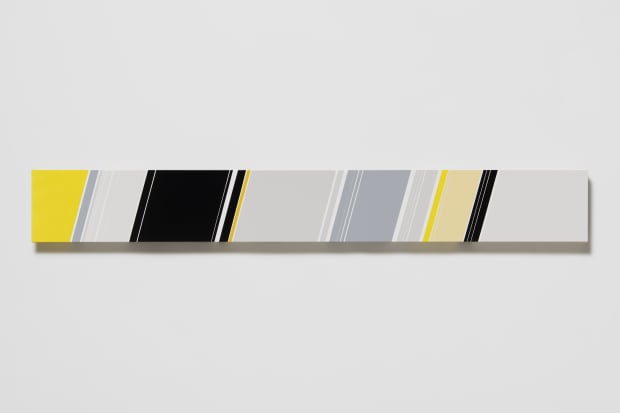

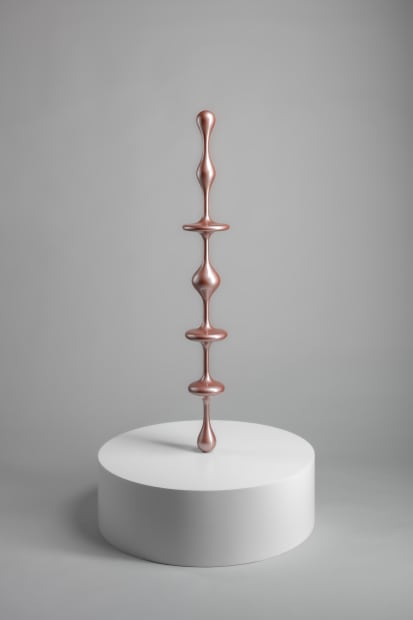
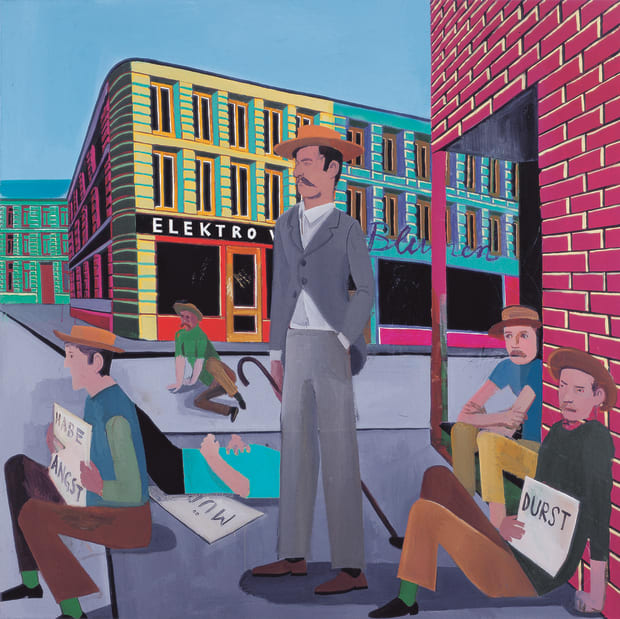

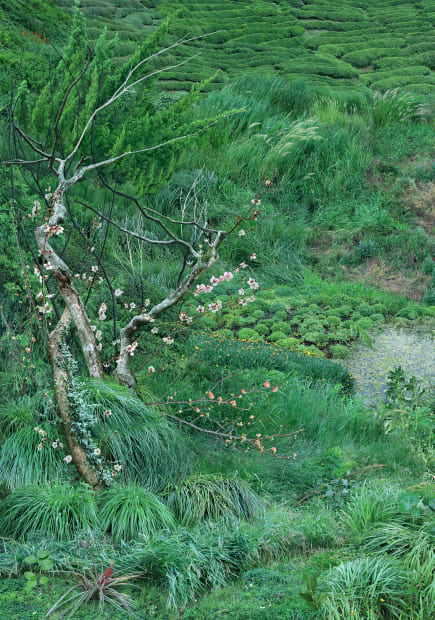
WON Seoung Won(b.1972) transformed hundreds of photographic snapshots taken by herself into a fantastical images through an exquisite computing work. The imaginary space, being narrative, speaks of yesterday and today with a personal tomorrow, and by extension, the relationship between each individual of the collective. In her work, composed with the artist’s distinctive views based on a realistic logic and the unfamiliarity by delicate imagination, the profound and heavy subject of human is revealed as a wit and visual amusement, as well as evoking an analogue feeling. Her work from an existing incident in reality delivers subtle emotions. And the image containing a story begins to infinitely expand onward like a three dimensional picture book that keeps unfolding new time and space page after page.
WON Seoung Won received M.F.A. from Kunstakademie Dusseldorf in 2002 and Kunsthochschule für Medien Köln in 2005. WON held solo exhibitions at Arario Gallery (Korea) in 2017, Podbielsky Contemporary (Germany) in 2014, Alternative Space LOOP (Korea) in 2008, and participated in numerous group exhibitions at Seoul National University Museum of Art (Korea), Gyeongnam Art Museum (Korea) in 2021, Gwangju Museum of Art (Korea), National Museum of Modern and Contemporary Art (Korea) in 2020, Museum SAN (Korea) in 2019, Total Museum of Art (Korea) in 2018, Arario Gallery (China) and Zacheta Project Room (Poland) in 2017, National Museum of Modern and Contemporary Art (Korea) and Mori Art Museum (Japan) in 2014, MoCA Shanghai (China) and Liverpool Biennial 2012 (UK) in 2012, Mica Moca Project (Berlin, Germany) in 2011, and Museum of Fine Art Houston (US) in 2009. Her works are collected at Osthaus Museum (Germany), Santa Barbara Museum of Art (US), Kunsthaus Lempertz (Germany), Museum of Photography (Korea), Seoul Museum of Art (Korea), Gyeonggi Museum of Modern Art (Korea), Goeun Art Foundation (Korea) and Arario Museum (Korea).
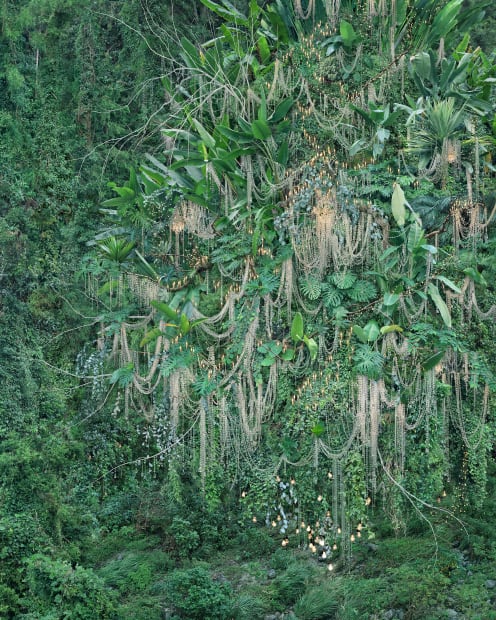
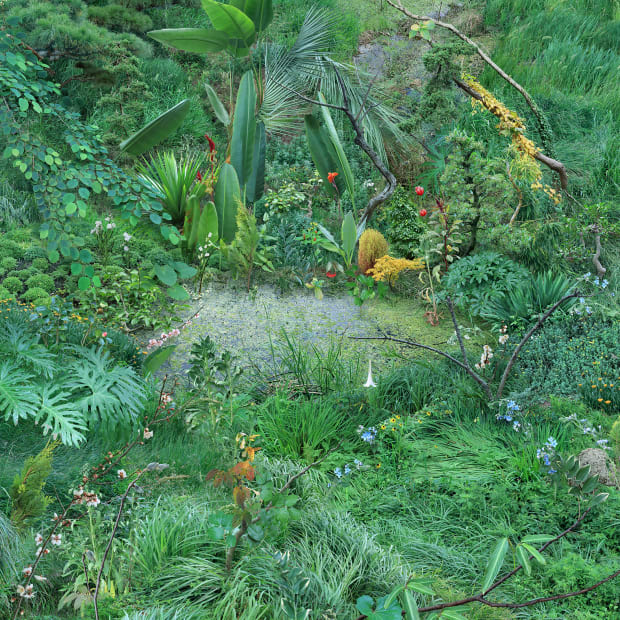

The first impression of LEE Jihyun’s paintings is languid. Nevertheless, this sense of languidness emitted from the familiar landscape based on the modern sense moves to a new phase when you find another intimate space overlapped on those works. The momentary, simultaneous unfolding of accustomed but different images in a same place has a cynicism beyond reason like a fancy coming into your head even in a very pathetic or urgent moment.
LEE Jihyun studied and graduated from Sungshin Women's University and is in the course of master's degree at the School of Visual Arts in USA. With participating in the first group exhibition in 2000, the Artist has been named in exhibitions held in various countries such as the United States, Switzerland and Japan. She has exhibited nine individual exhibitions including Doosan Gallery, Arario Gallery, Gallery Sun Contemporary and Gallery Hyundai. Her works have been collected by Museum of Modern and Contemporary Art and the ARARIO MUSEUM. She is currently living and working in the United States.

LEE Jinju’s works are an ambiguous world from the artist’s perspective, filled with infinitely fragile beings barely enduring balance. In spite of the appearance of familiar materials, the more you look into the works, the more intuitive and sometimes surreal, they stimulate the viewer’s unconsciousness in the dreamy unknown world. Like an unfinished sentence or an unclear answer. She adds depth to the work by drawing out a space where the memory of the viewer and the artist’s own memory coexist, rather than a fixed answer. Her work on human memory contains beautiful moments, joy, wounds, trauma and cruelty that are contained in our memories.
LEE Jinju’s work begins from questions thrown repeatedly in life. The negative events and emotions of the past, which were not even wanted, endlessly appear and disappear within the everyday life. She continuously asks herself what becomes the device which arouses memories from within the uncomfortable 'ventilation' one does not wish to face, what are the common structures of memories and in what way do memories, which survived without having been forgotten, manufacture. From the superfluous cut to a well-made frame, following their softly soundless stories, cuddling the insignificant and petty motifs of the everyday, she discovers the unconscious sensuous layer that is hidden inside. At that moment, the artist becomes a melancholic adventurer and the everyday is reborn into things of the extraordinary.

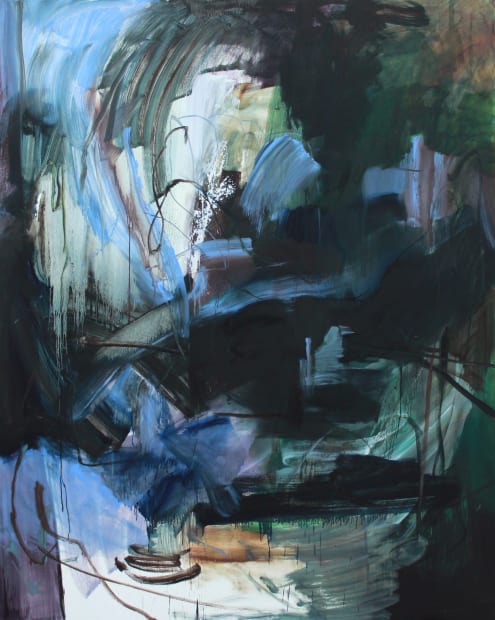
KOO Jiyoon’s (b.1982) works embody the time that passes in the city, depicting the condensed psychological landscape, which reflects on the ever-changing characteristics of urban chronology. The artist identifies the city and its buildings as biological organisms belonging to the structural concept of time. The artist, who observes and personifies the crumbling old buildings in and around Seoul, realizes the tragic fate of these buildings that will one day remain only as a distant memory, disappearing in the brutal order of the city, maintained by the constant cycle of destruction and creation. Therefore, the constant change of emotions, which mirrors the fluctuating characteristics of the city, are at the heart of KOO Jiyoon’s work. The artist captures the city’s desires and memories while reflecting on time and combines them into a psychological landscape where visual elements, such as colors and lines, mingle within the boundaries of the canvas. In particular, the unique and subtle aesthetic of KOO Jiyoon’s works arises from the coexistence of contrast between the new and the old, between the brushstrokes that are sharp and rough in places and thick and soft in others, and between the mixture of cloudy and vivid colors, providing yet another focal point in the abstract paintings.
KOO Jiyoon held solo exhibitions at Arario Gallery (Seoul, Korea) in 2021, Arario Museum in Space (Seoul, Korea) in 2018 and Sarubia Dabang (Seoul, Korea) in 2016. The major group exhibitions that she participated at is "Maybe a Wonderful Place” (Doosan gallery, Seoul, Korea) in 2019, “All over” (Hite Collection, Seoul, Korea) in and "Go Through-and-then"(Zaha Museum, Seoul, Korea) in 2018, “Ugly as Art”(Seoul National University Art Museum, Seoul, Korea) in 2017, "Salon of the Day"(Common center, Seoul, Korea) in 2014, “Subtle Anxiety”(Doosan galley, NY, US) in 2010. He won the Etro Arts Award in 2014 and the “Young Artist Award” hosted by the Bank of Korea in 2013. Her work is part of many significant collections such as the Arario Museum (Korea), the Bank of Korea (Korea), and the Cummins Station (USA).

JANG Jongwan portrays the endless anxiety of human-centered societies and modern humanity, which emphasizes selfish rationality, in a peculiar warm but cynical perspective. His paintings, in a classical way, mix with the artist's view of contemporary society. Unlike the so-called "barbershop", which has an impression of easy and familiar, work is full of pity and ridicule that makes the viewer discover a new meaning. The ironic landscape maximizes its kitschiness by being drawn on the back of the animal skin, a mixture of human wishes for salvation, neglected nature and animals, blind and insanity beliefs.
The artist wants to expand the area of the image by attempting to work on video and installation. The eyes of the animals in the video look somewhat like those of humans, and the anxiety and confusion of their eyes seem to communicate with the viewer. Unlike the world on the screen with a comfortable color, our gaze facing him again returns to an uneasy and cold reality. The artist humorously twists the human desire for salvation which represented by utopia or heaven, and asks in which direction what lies in our desire is headed.
JANG Jongwan held solo exhibitions at Arario Museum in Space (Seoul, Korea) in 2020, Arario Gallery (Seoul, Korea) in 2017, Kumho Museum of Art (Seoul, Korea) and Willing & Dealing (Seoul, Korea) in 2014, He also participated in group exhibition such as Willing & Dealing, Daegu Art Museum (Daegu, Korea), MOCA (Busan, Korea), Ilmin Museum of Art (Seoul, Korea), SeMA Buk-Seoul Museum of Art (Seoul, Korea) in 2021, Seoul 284 (Seoul, Korea) in 2020, National Museum of Modern and Contemporary Art (Cheongju, Korea and BOAN (Seoul, Korea)) in 2019, Yeosu International Arts Festival (Yoesu, Korea) and Seoul Museum of Art (Seoul, Korea) in 2018, Hite Collection (Seoul, Korea) in 2017, Arario Museum Tapdong Bike Shop (Jeju, Korea) in 2015, Shenzhen Independent Animation Biennale (Shenzhen, China) and Daegu Art Museum (Daegu, Korea) in 2014, Arko Museum (Seoul, Korea) in 2012, Alt Space Loop (Seoul, Korea) in 2011, Doosan Gallery (Seoul, Korea) in 2009.


NOH Sangho (b.1986) is a natural born storyteller, sincere practitioner and bold experimenter. Browsing the Internet and social media daily, the artist diligently collects myriad images of the day to day. NOH reconstructs the fragments selected from an array of images onto carbon paper, which is a medium that represents him as an artist. The works, executed on carbon paper, reveal the artist’s unique perspective on the flexibility of the “image” in the digital era, defined by a flood of images that travel and transform freely across platforms. Furthermore, in an attempt to expand the theme of his work to realizing the three-dimensionality of images, the artist introduces a series of works in which 2D planes and 3D moving images are intertwined organically. NOH, who considers the manner in which his works are presented and consumed to be an essential part of his practice, explores various bold and experimental ways of installation, such as largescale wall hangings and drawings on hangers—reminiscent of a clothing store.
NOH Sangho has held solo exhibitions at various institutions such as Arario Museum in Space (Seoul, Korea) in 2018, SongEun ArtCube (Seoul, Korea) in 2017, and SeMA West Warehouse in 2016 as well as group exhibitions including “The 13th Hesitation” at Arario Gallery (Cheonan, Korea) in 2021, “Elsewhere” at Atelier Hermès (Seoul, Korea) in 2020, “POP/corn” at Daegu Art Museum (Daegu, Korea) in 2019, “Summer Love” at SongEun ArtSpace (Seoul, Korea) and “Flip Book” at Ilmin Museum of Art (Seoul, Korea) in 2018, “B-Cut Drawing” at Kumho Museum of Art (Seoul, Korea), and “Layers and Spaces” at MMCA (Gwacheon, Korea) in 2017, “Intuitive Landscape” at Arario Gallery (Seoul, Korea) in 2016, “Young Korean Artists 2014” at MMCA (Gwacheon, Korea) in 2014. The artist participated in an artist residency exchange program between Hungary and Korea (Budapest, Hungary) in 2016 and was the artist-in-residence at the SeMA Nanji Residency (Seoul, Korea) in 2015.

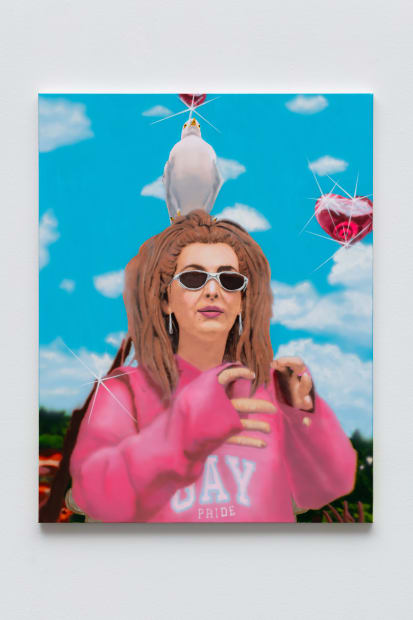
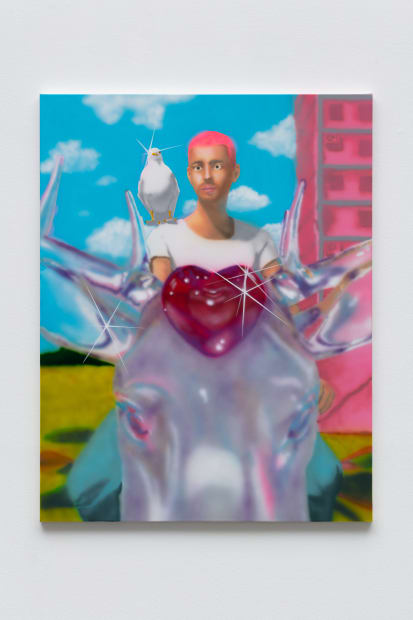
<더 그레이트 챕북 4 - 조이풀>과 <더 그레이트 챕북 4 - 롤라>는 2021년 신작으로 클립 NFT 작품을 캔버스에 옮긴 새로운 실험적 작업이다. 3D 작업물을 2D로 옮겨 그리는 작업을 앞으로 꾸준히 할 계획으로, 내년이나 그 후년에 개인전을 계획 중이다. 영상, 관련 드로잉, 에어브러쉬로 그린 회화 등이 같이 어우려져 지금 작품처럼 인물 한명 한명이 주인공인 형태로 나오고, 기존에 <더 그레이트 챕북 3> 시리즈 같이 합쳐진 그림도 계획 중이다. 작업 맥락상 가상과 현전을 계속 오고가는 방식, 디지털 이미지와 아날로그 신체성을 오고가는 하이브리드한 매체 병행이 작업 방식의 특징이다. 발렌시아가 GAY 라고 써 있는 후드티를 입고 있는 사진, 티셔츠에 조이풀이라고 적혀있던 노인 사진을 보다가 그 얼굴을 따와서 만든 작품으로 작가는 그날그날 봤던 정보들을 취합해서 떠오르는 이름을 붙였다고 한다. 롤라는 SNS에서 무작위로 발견된 이름으로 Lola는 Y프로젝트라는 브랜드의 뉴시즌 브랜드 필름이 롤라런이라는 영화를 오마주한 작업이다. 따라서 작품 속 롤라라는 주인공이 입고 있는 옷도 Y프로젝트의 옷을 모델링한 것이다.
This website uses cookies
This site uses cookies to help make it more useful to you. Please contact us to find out more about our Cookie Policy.
* denotes required fields
We will process the personal data you have supplied in accordance with our privacy policy (available on request). You can unsubscribe or change your preferences at any time by clicking the link in our emails.